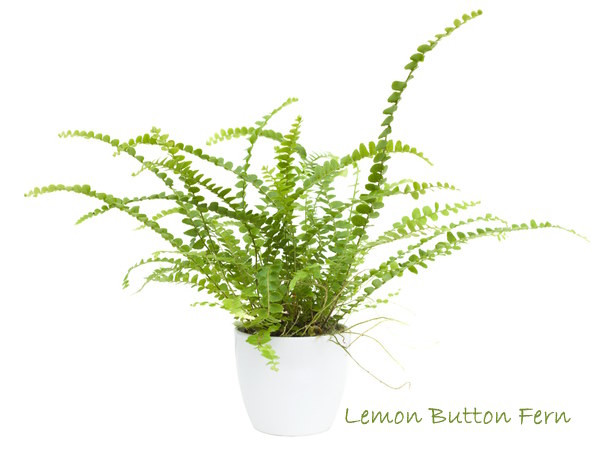Lemon Button Fern Care
Discover the keys to lemon button fern care and keep your houseplant thriving for years to come. In this guide, you'll discover how much light this tropical fern wants year-round, what to do about brown leaflets, when to repot, plus how to fend off problems, and more.

Get to Know Lemon Button Fern
Lemon button fern, known botanically as Nephrolepis cordifolia, has origins in tropical Asia and Northeastern Australia.
This airy, delicate looking fern brings a cascade of verdant vitality to any place you want a touch of the tropics. It grows in a rosette, with rounded, bright green leaflets trailing down each frond. Fronds stand upright at first, then arch slightly as they grow. Young plants make handsome table accents.
How big does it get? Although slow-growing, this tropical fern variety will eventually grow to 1 ft (30 cm) tall.
Repot when you see roots growing through the drainage holes of the pot. Use a container 2-inches (5 cm) larger than the old one. Why? A too-large planter will hold too much water, which can lead to root rot. Spring is the best time to repot, when this fern is beginning its most active time of growth.
Want to propagate your houseplant? Dividing lemon button fern is easy to do because it grows from rhizomes. To divide, remove the entire fern from its pot. Then, gently pull the section you want to separate and pot it separately.
Is lemon button fern toxic to cats and dogs? No, according to the ASPCA. You can grow this tropical fern indoors without worry, it's pet-safe.
Indoor Lemon Button Fern Care
Light: Moderate to bright, indirect sunlight from a south- or west-facing window is ideal for lemon button fern. However, keep it out of direct sunlight, which will scorch its leaflets. Nephrolepis cordifolia responds well to fluorescent light. Set your houseplant 12 inches below light for 14 to 16 hours a day. Darkness is vital for plant growth (it needs a rest, too), so give your fern at least 6 hours of complete darkness at night.
Water: Keep soil lightly moist spring through fall. Water less in winter, allowing the top of the potting medium to dry out before watering again. Wilted, yellow fronds are a sign of over-watering.
Humidity: This tropical fern loves moist air as in its native habitat. If relative humidity drops below 50%, place the fern on a tray of wet pebbles or use a cool-mist room humidifier. Indoor air can become extremely dry during the winter months so it's a good idea to use a humidity monitor, rather than guess.
Temperature: Despite its tropical beginnings, this fern grows best in average or slightly cool to warm room temperatures (60-75°F/16-21°C). And it doesn't like drafts, especially from heat vents, which can cause dry, brown leaf tips and leaf loss.
Potting Medium: Half-and-half mixture of peat moss and houseplant potting mix. Do not use a mix that contains fertilizer because it will burn delicate fern roots.
Fertilizer: Feed once a month year-round with a balanced (such as 10-10-10 NPK) liquid fertilizer diluted to half the normal strength. Always water before fertilizing to prevent fertilizer burn.
Common Lemon Button Fern Problems
Yellow fronds are a common symptom of overwatering. Wait until the potting mix dries half way down before watering again. You can cut off the yellowed fronds. Also, check the roots. Are they black and rotted? If so, you can compost your plant -- it won't recover.
Brown leaflets are often a symptom of low humidity. This tropical native likes moist air. Older fronds will naturally turn brown; you can cut them off at the soil level.
Dull, pale-looking leaflets are getting too much direct sunlight, or possibly hot, dry air. Move your lemon button fern away from the window, and away from air vents. Leaves should return to bright green within a few weeks.
Watch for pests. Scale and spider mites are the most common. Treat any infestation right away.


